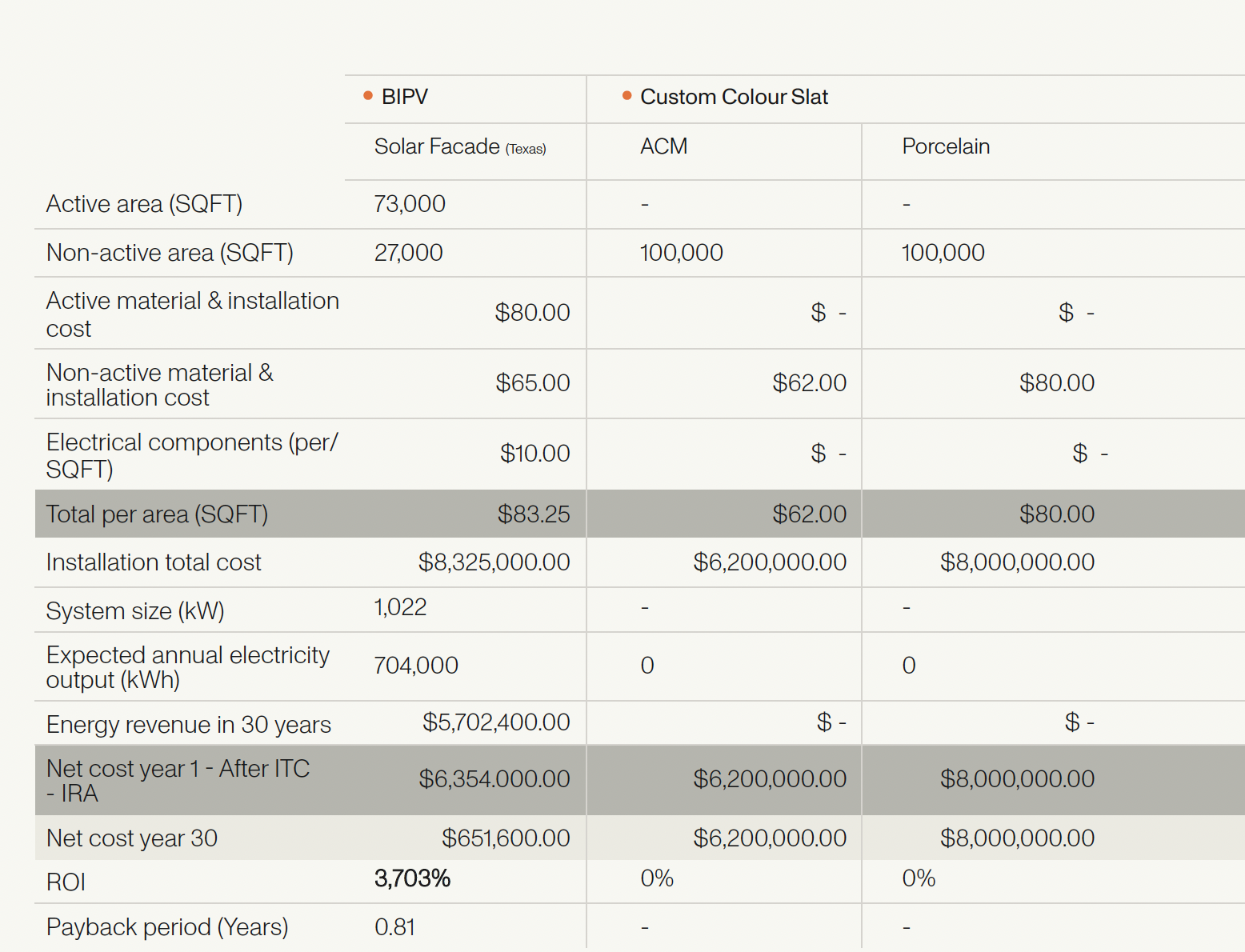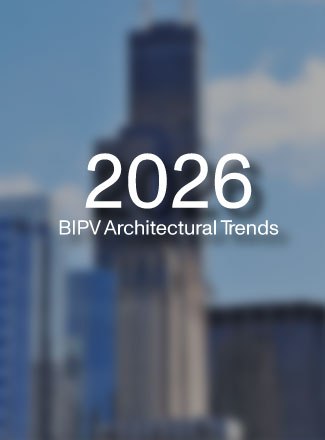
BIPV
July 25, 2025

In 2025, developers and building owners face growing expectations to deliver buildings that excel in energy efficiency, financial performance, and resilience to market shifts. Mitrex building-integrated photovoltaics (BIPV) transform building exteriors into energy-generating assets — unlike traditional cladding, which only adds cost and maintenance.
Mitrex facades can achieve payback in as little as 0–5 years!, generate decades of ongoing savings, and elevate a property’s appeal — all without compromising on design integrity.
This 6,000 m² Mitrex facade produces ~420,000 kWh annually — saving approximately $100,000 per year and achieving ROI in under 1 year. Beyond the financials, it helps the university meet its sustainability goals by avoiding ~282 tonnes of CO₂ emissions annually. The system also contributed to the university’s ability to meet its 20% renewable energy target while maintaining a distinctive, modern facade.
For this 3,000 m² multifamily retrofit, the Mitrex facade produces ~180,000 kWh/year, saving ~$40,000 annually and delivering ROI in ~3 years. It also achieves a remarkable ~121 tonnes of CO₂ emissions avoided per year, helping secure financing based on sustainability and attracting environmentally-conscious tenants.
In a challenging healthcare environment, this 1,500 m² Mitrex facade generates ~60,000 kWh/year, offsetting significant operating costs and avoiding ~40.3 tonnes of CO₂ annually. The maintenance-free cladding also reduces long-term costs while aligning with the hospital’s sustainability commitments.

Above is a comparison of a 100,000 SQFT Project in Texas comparing the ROI of a Mitrex Solar Facade compared to traditional cladding materials. After 30 years, the BIPV is expected to generate over $5.5 million in energy savings.
Mitrex solar facades generate clean electricity directly from exterior walls, reducing dependence on grid energy and offsetting operating costs. In optimal conditions, Mitrex facades can produce up to 1,300% of the energy needed to offset envelope energy losses — often contributing surplus power back to the grid.
Unlike rooftop solar, which consumes valuable roof space, Mitrex utilizes underused vertical surfaces — preserving rooftops for amenities or mechanical systems — and delivering unmatched efficiency and versatility.
Mitrex facades qualify for significant incentives, which further reduce upfront costs and improve ROI:
With these programs, many projects achieve ROI within 0–5 years — sometimes even faster, as demonstrated by the University of Toronto project.
Mitrex facades increase property value by positioning buildings as future-ready. In markets like Toronto, New York, and Chicago — where energy-efficient buildings command higher rents, greater occupancy, and institutional investor interest — Mitrex provides a clear advantage.
For example, the Edmonton residential tower attracted premium tenants and investors after retrofitting with a Mitrex facade, enhancing its market appeal and environmental credentials.
Beyond financials, Mitrex reduces a building’s carbon footprint — up to 3.8 tonnes of CO₂ per 1,000 m² over 30 years, supporting ESG goals and investor demands for sustainability.
Mitrex systems are certified under UL 61730 (solar safety), UL 790 (fire resistance), and Miami-Dade NOA (wind and structural integrity). With no moving parts and minimal maintenance, they deliver consistent energy output and aesthetic value over decades. For example, a Toronto retrofit maintained 98% efficiency after 5 years, demonstrating its reliability.
Mitrex supports project teams from concept to completion — providing energy modeling, financial analysis, design-assist services, and ongoing support. This ensures that facades align with both aesthetic and financial objectives while minimizing risk and simplifying construction.
With increasing regulatory pressure toward net-zero emissions, rising energy costs, and growing tenant demand for sustainable buildings, the market for high-performance facades is stronger than ever. Mitrex helps developers and owners not only meet these demands — but turn them into competitive advantages.
News & Articles

Mitrex BIPV is engineered to match—and exceed—the lifespan of high-performance building envelope systems, delivering structural durability, long-term energy output, and measurable sustainability benefits. This article outlines the testing, certifications, and warranties behind solar facades designed to perform for decades across global climates and project types.

Mitrex BIPV is engineered to match—and exceed—the lifespan of high-performance building envelope systems, delivering structural durability, long-term energy output, and measurable sustainability benefits. This article outlines the testing, certifications, and warranties behind solar facades designed to perform for decades across global climates and project types.

Design-driven solar façades are the future—and in 2026, building-integrated photovoltaics (BIPV) must meet high architectural standards as well as performance benchmarks. This blog highlights five architectural design trends that are shaping next-generation BIPV applications and how Mitrex products—from custom murals to landmark towers—are making them a reality.

Design-driven solar façades are the future—and in 2026, building-integrated photovoltaics (BIPV) must meet high architectural standards as well as performance benchmarks. This blog highlights five architectural design trends that are shaping next-generation BIPV applications and how Mitrex products—from custom murals to landmark towers—are making them a reality.

This blog introduces eFacade TILT, Mitrex’s newest BIPV product that blends solar generation with architectural depth. Featuring tilted modules, 23 available colours, and seamless rainscreen system integration, TILT transforms flat walls into high-performance, three-dimensional assets.

This blog introduces eFacade TILT, Mitrex’s newest BIPV product that blends solar generation with architectural depth. Featuring tilted modules, 23 available colours, and seamless rainscreen system integration, TILT transforms flat walls into high-performance, three-dimensional assets.